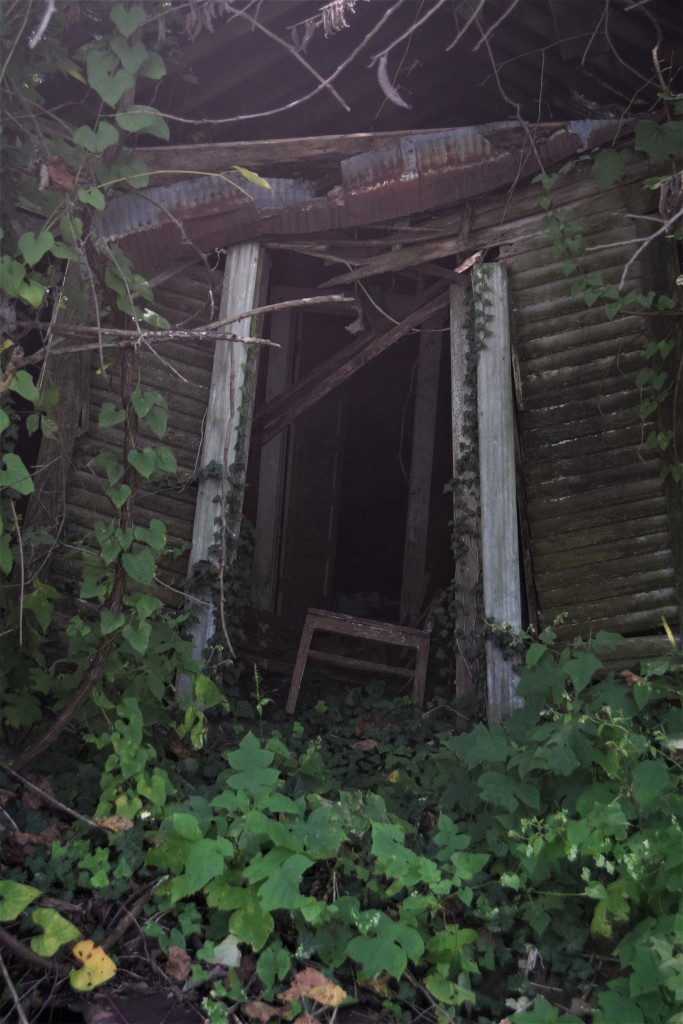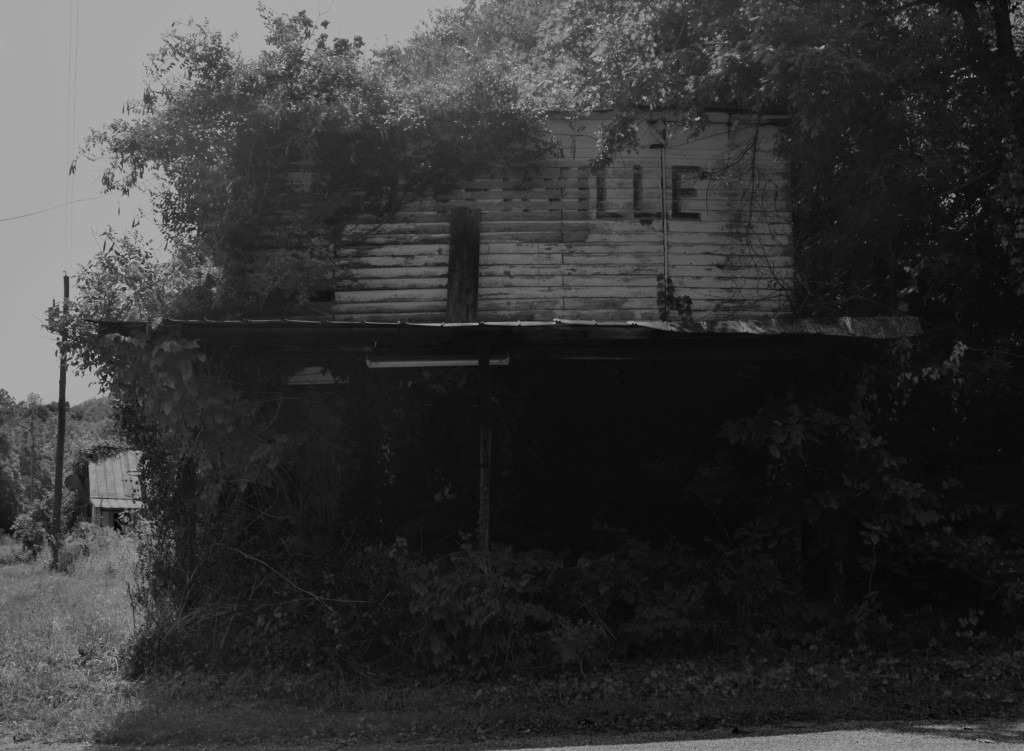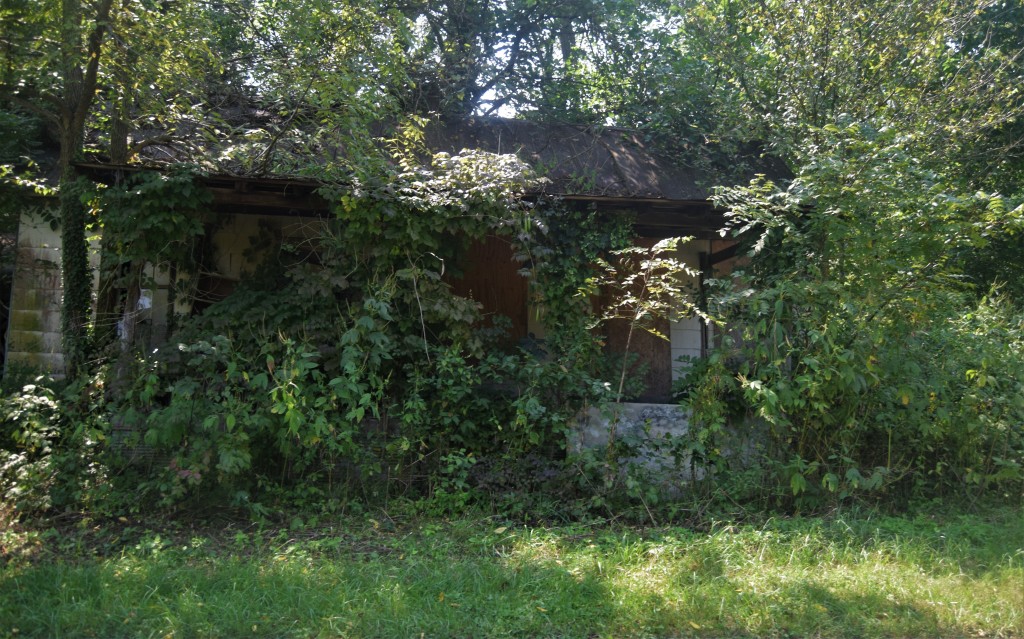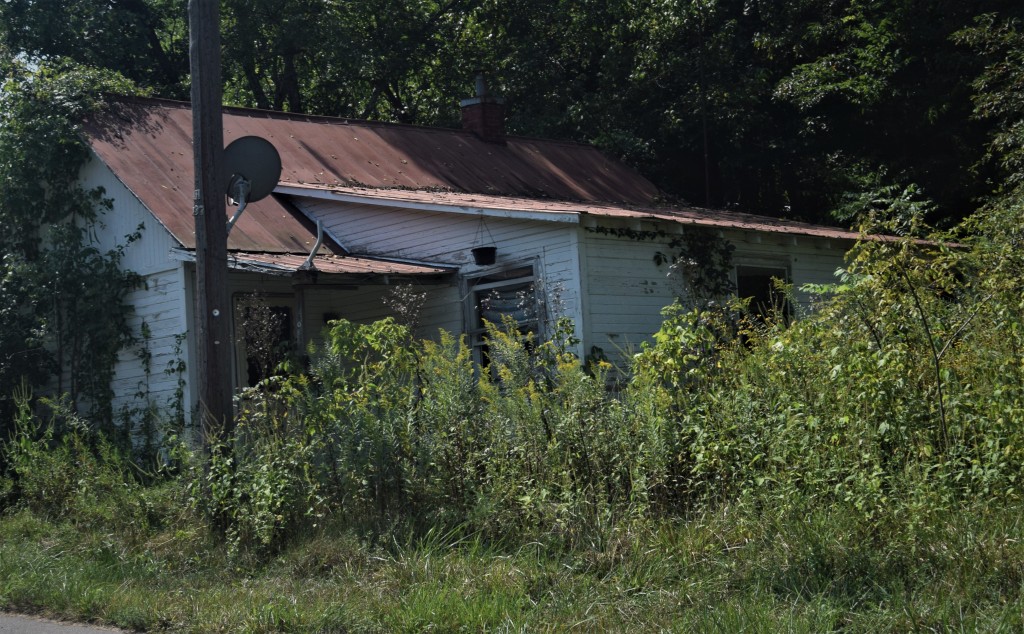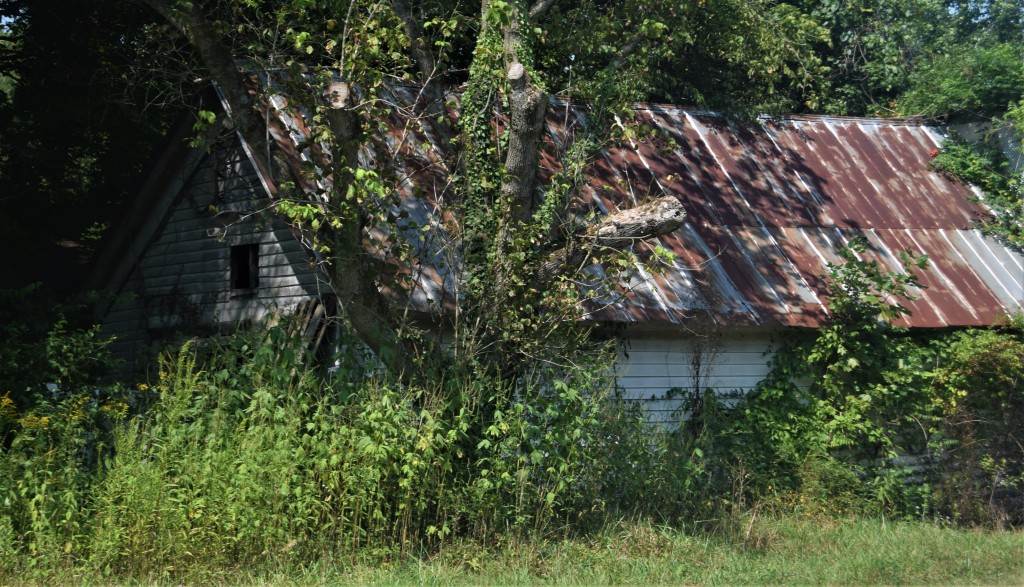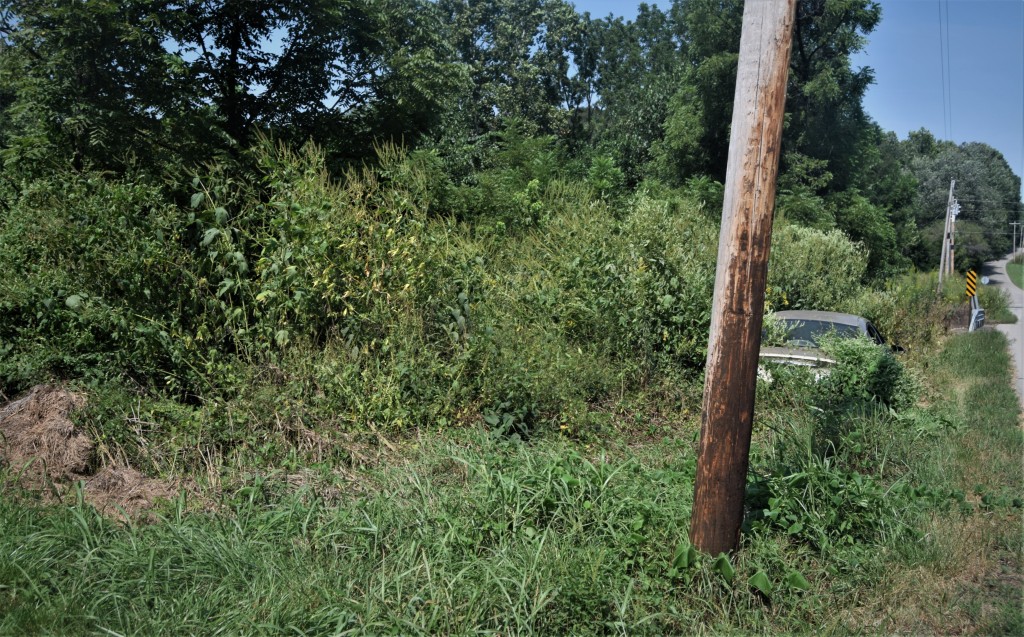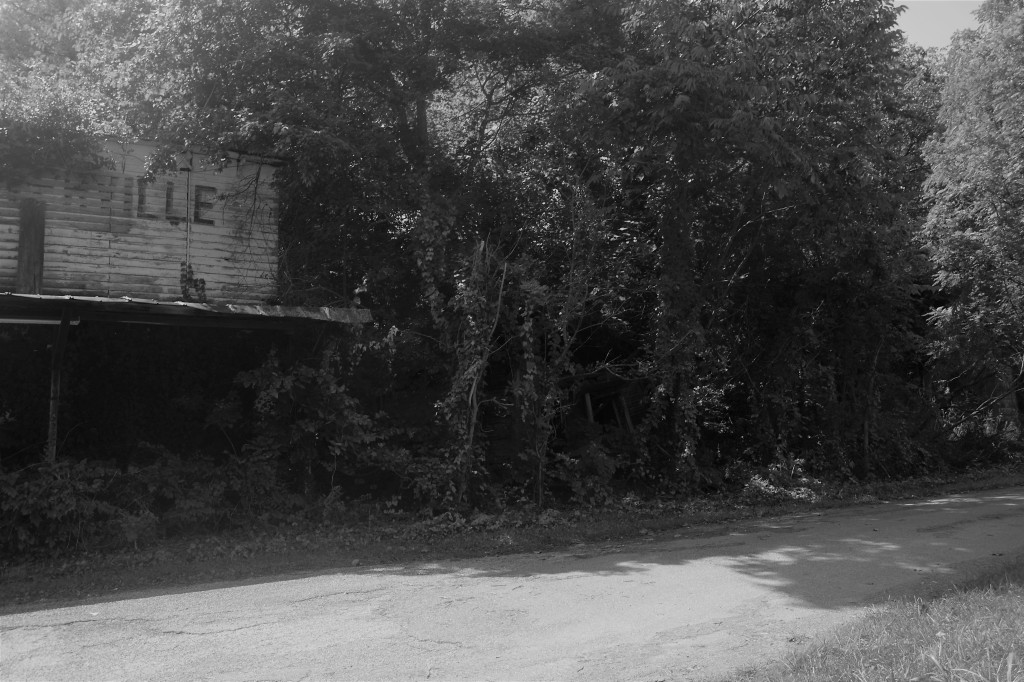It’s mid-spring, and dad calls me up for a road trip to Charlestown State Park. He’s heard about the possibility of ruins that go back to pre-revolutionary times when a settler allegedly constructed a fort to fight off the indigenous people in the area, who weren’t thrilled with having the white man take their land (imagine that….bad Indians….). The sun was out. It was to get around 50 degrees down by the Ohio River. Of course I’m up for a quick trip.
As usual….I came away with another unexpected story about lost Indiana.
Charlestown State Park is located along the Ohio River, approximately 15 miles from Louisville and Jeffersonville. It was once part of the Indiana Army Ammunition Plant, which was donated to the state of Indiana when the plant closed. It offers camping and over 14 miles of scenic trails. The dominating feature is an isolated bedrock ridge, “Devil’s Backbone”, which, according to legend and our reason for the trip, is the location of an ancient stone fort built by Welsh settlers who traveled along the Ohio in the 12th century. Exploring this piece of wilderness along the Ohio, we discovered another piece of forgotten Indiana history, Rose Island.
Rose Island is actually part of a peninsula that is formed at the location where Fourteen Mile Creek empties into the Ohio River. It has been a favorite picnic and recreational area for over one hundred years, when Victorians in the 1880’s would travel up the river from Jeffersonville and Louisville for an afternoon retreat following church services. It was also a favorite location for church camps to set up. At the time, it was referred to as Fern Grove because, as you can guess, its large groves of ferns. Oddly enough, I didn’t note any ferns in my hikes that day.
In the 1800’s, the Ohio River was a major water highway, with steamboats and barges transporting people and goods from the cities in the East to the Mississippi so they could get down to Gulf of Mexico. In the mid to late 1800’s the railroad made its way to the Midwest, thus making traveling by river mostly obsolete. Fern Grove was purchased by the Louisville and Jeffersonville Ferry Company, who developed the island into a resort and retreat area. Steamboats that once carried goods now ferried families from Louisville, Jeffersonville, and Cincinnati to the island for recreation. One of those steamboats, the Idlewild, would become the famous Belle of Louisville that still can be seen majestically gracing the waters of Ohio River.
IN 1923, Louisville businessman and philanthropist, Davis Rose, purchased the island with the goal of turning it into a full fledged resort with a hotel and amusement park. Rose, having made his fortune starting the Standard Printing Company in Louisville, longed to be like his heroes, Rockefeller and Cernegie, and use his wealth to give back to the community. He had already donated much of his fortune to parks, schools, and even donating 25 acres of electric lights to Louisville and he saw the development of an amusement park/recreation resort as a good idea.
Rose Island Amusement Park opened its doors in 1923. Guests arrived on the island by boat or by land, crossing a narrow suspension bridge that crossed Fourteen Mile Creek. They were greeted by a long trail, with welcome signs and flowers bordering the trail. Guests could stay in one of the quaint cottages that overlooked the Ohio and dine in a fine restaurant. Or guests could come for the day and picnic along the river. Guests were could ride on a giant wooded ferris wheel or attend an exhibition on birds or guns. The island park also had a zoo with a pack of wolves, monkeys, and a black bear named Teddy Roosevelt. In the summer, dances and live bands performed at a dance hall, and in the winter could ice skate in that same building.
The Great Flood of 1937 sealed the fate of Rose Island. Following spring thaws and heavy rains, the Ohio River crested 19 feet above flood stage. It left nearly 1 million people homeless and 285 dead. The flood turned the waterway into a 25 mile lake, and buried Rose Island under 10 feet of water. Nearly every structure on the island was washed away. What was left was considered structurally unsafe. The Island amusement park was abandoned and left to nature.
During WWII, the area was purchased by the army to provide a buffer from the Oho River. After the war, the land was donated back to the state, and the park was established in the 1990’s. The 1990’s and the 2000’s have brought renovations back to the island. Paths were put in, along with information kiosks to tell the story of Rose Island. The iron arches were replaced. Portville Bridge was brought in to replace the swinging rope bridge. When we visited, there were no paved paths, just dirt trails from hikers. The swimming pool had not been filled in and the dirty, rain water filled the hole. It was both eerie and sad.
In the 15 years that Rose Island operated, hundreds of people across Indiana, Kentucky, and Ohio visited the park. It even survived the Great Depression, when Rose covered losses so that people could still have a place to visit at a time when people desperately needed such a place; It couldn’t survive the waters of the Ohio. Rose’s goal of creating a place for recreation, as a gift, hasn’t died. Rose Island, as part of the Charlestown State Park, is once again a place for people to come and enjoy nature. Rose’s gift continues to live on.
References and for More Information:
About Us. (2020, April 27). Retrieved December 07, 2020, from https://oldregularbaptist.com/About/
Flock, C. (2020, May 28). Rose Island: Hike Through a 100-Year-Old, Abandoned Amusement Park. Retrieved December 14, 2020, from https://visitindiana.com/blog/index.php/2019/03/12/rose-island-abandoned-theme-park/
Mitchell, D. (2019, June 04). How this ‘ghost’ amusement park found a new life in Charlestown. Retrieved December 14, 2020, from https://www.indystar.com/story/news/history/retroindy/2018/08/30/abandoned-rose-island-amusement-park-enjoys-new-life-state-park/1061450002/
Old Regular Baptists. (2020, December 04). Retrieved December 07, 2020, from https://en.wikipedia.org/wiki/Old_Regular_Baptists
Orangebeanindiana. (2019, October 25). Abandoned Rose Island Amusement Park: Indiana’s Ghost of Good Times. Retrieved December 14, 2020, from https://orangebeanindiana.com/2019/10/25/rose-island-amusement-park/
Ramsey, D. (2017, November 21). Tuned Up in the Spirit. Oxford America, A Magazine of the South. doi:https://www.oxfordamerican.org/magazine/item/1370-tuned-up-in-the-spirit
Regular Baptists. (2020, June 30). Retrieved December 0, 2020, from https://en.wikipedia.org/wiki/Regular_Baptists
Rose Island (amusement park). (2020, August 25). Retrieved December 14, 2020, from https://en.wikipedia.org/wiki/Rose_Island_(amusement_park)
Rose Island 14 Miles Above Louisville on the Beautiful Ohio. (1930). Retrieved December 14, 2020, from https://indianamemory.contentdm.oclc.org/digital/collection/p15078coll17/id/9429













































